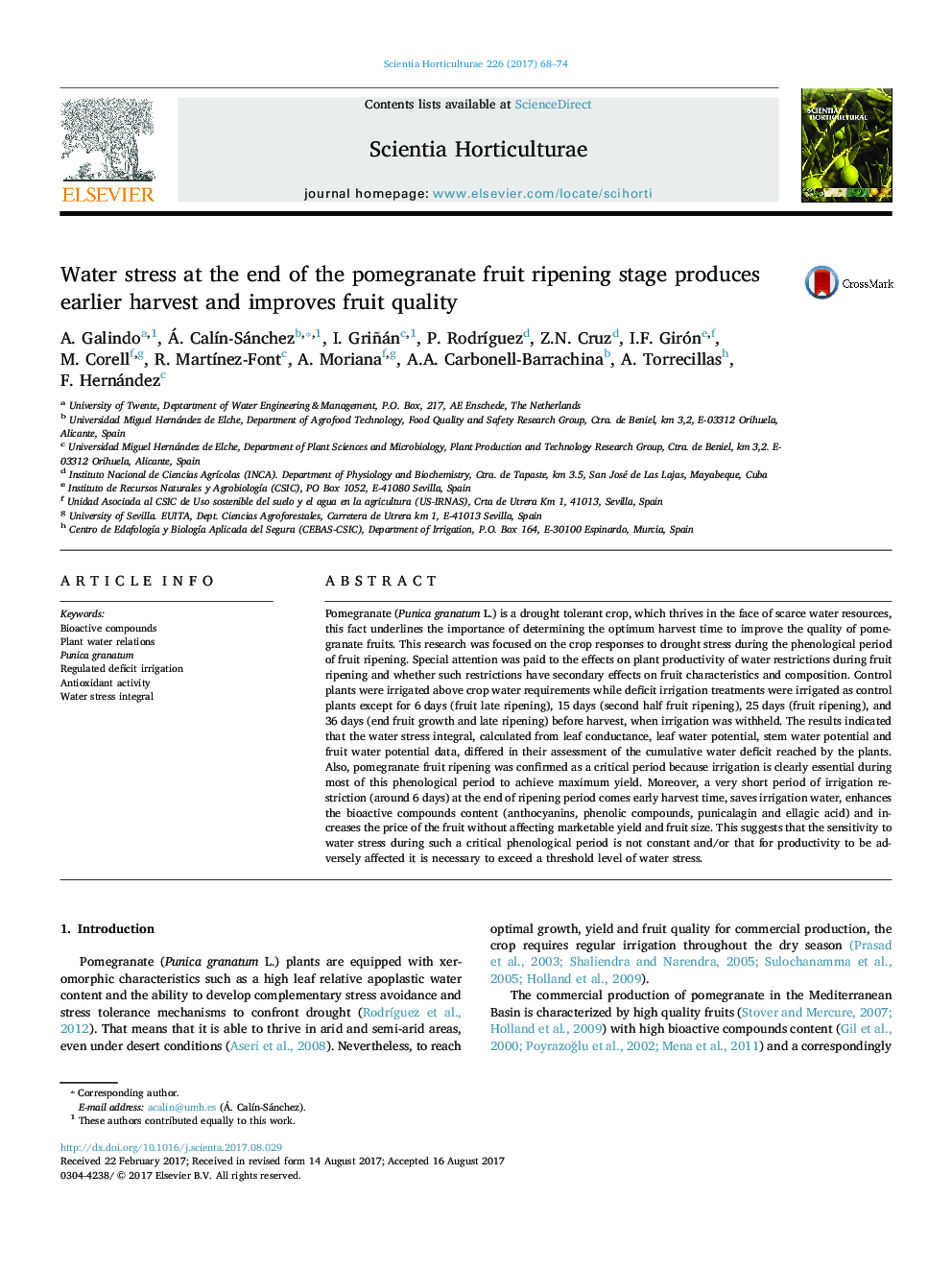| Article ID | Journal | Published Year | Pages | File Type |
|---|---|---|---|---|
| 5769344 | Scientia Horticulturae | 2017 | 7 Pages |
â¢Fruit ripening is a critical period.â¢Water stress induces adverse effects on productivity.â¢Water stress at fruit late ripening stage dont affect yield.â¢Water stress permits earlier harvesting.â¢Water stress save water and enhances bioactive compounds content.
Pomegranate (Punica granatum L.) is a drought tolerant crop, which thrives in the face of scarce water resources, this fact underlines the importance of determining the optimum harvest time to improve the quality of pomegranate fruits. This research was focused on the crop responses to drought stress during the phenological period of fruit ripening. Special attention was paid to the effects on plant productivity of water restrictions during fruit ripening and whether such restrictions have secondary effects on fruit characteristics and composition. Control plants were irrigated above crop water requirements while deficit irrigation treatments were irrigated as control plants except for 6Â days (fruit late ripening), 15Â days (second half fruit ripening), 25Â days (fruit ripening), and 36Â days (end fruit growth and late ripening) before harvest, when irrigation was withheld. The results indicated that the water stress integral, calculated from leaf conductance, leaf water potential, stem water potential and fruit water potential data, differed in their assessment of the cumulative water deficit reached by the plants. Also, pomegranate fruit ripening was confirmed as a critical period because irrigation is clearly essential during most of this phenological period to achieve maximum yield. Moreover, a very short period of irrigation restriction (around 6Â days) at the end of ripening period comes early harvest time, saves irrigation water, enhances the bioactive compounds content (anthocyanins, phenolic compounds, punicalagin and ellagic acid) and increases the price of the fruit without affecting marketable yield and fruit size. This suggests that the sensitivity to water stress during such a critical phenological period is not constant and/or that for productivity to be adversely affected it is necessary to exceed a threshold level of water stress.
